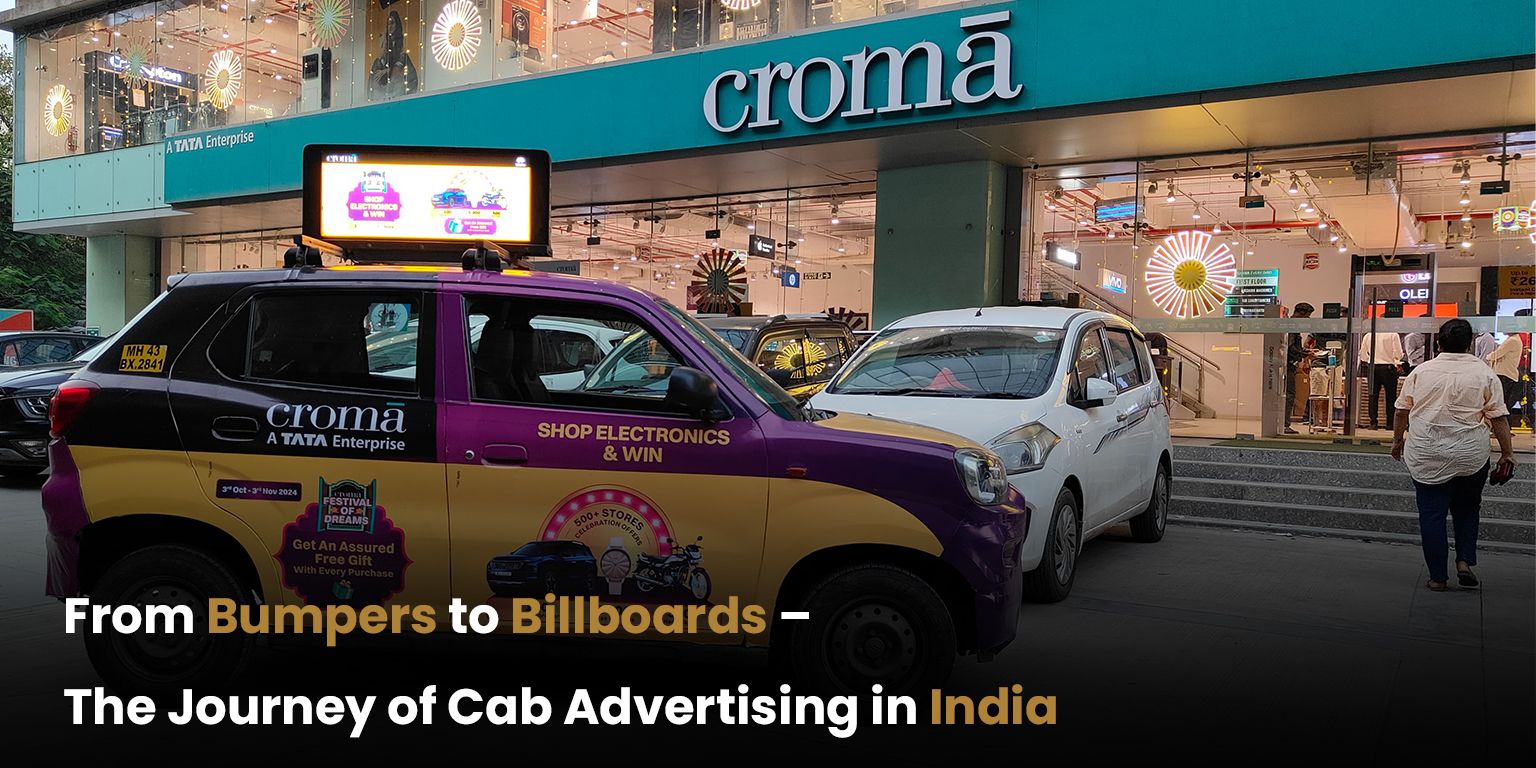The Evolution of Cab Advertising in India: From Static to Dynamic

Cab advertising in India has come a long way. What began as modest sticker placements on taxis has transformed into a dynamic, tech-driven, and highly visible branding opportunity across cities. From painted bumpers to full-vehicle wraps and app-integrated campaigns, the landscape of cab advertising has evolved to reflect both marketing innovation and urban lifestyle changes. This blog explores the journey of cab advertising in India, spotlighting its transformation and growing relevance in today’s advertising ecosystem.
The Early Days: Static and Localized Promotions
In the initial years, auto advertising and taxi promotions were hyperlocal. Advertisers relied on small rear bumper stickers or roof-top signage to reach audiences. These placements were inexpensive and primarily used by local businesses like coaching centers, food delivery joints, and cab service operators. There was little design customization and even less audience targeting.
While effective within neighborhoods, the static nature of early cab advertising lacked the scale or sophistication needed for broader brand awareness. It was treated more as a budget-friendly add-on than a serious advertising channel.
The Shift to Vehicle Branding Services
As brands began to explore vehicle branding services more seriously, particularly in metros, they recognized the massive potential in mobile visibility. This marked the first wave of transformation, where taxis and autos were seen as mobile billboard advertising assets.
Full-vehicle wraps started gaining attention. Brands like Zomato, Flipkart, and Paytm launched early cab wrap campaigns that combined bold design with mass exposure. The ability to take a message across the city, 14-16 hours a day, suddenly became attractive for larger advertisers.
This shift was not only visual but also strategic. Agencies began offering fleet branding services where entire sets of cabs could be branded to create a unified city-wide brand recall.
The Rise of Transit Advertising in India
The concept of transit advertising took deeper root when brands realized that the time people spent in traffic was a valuable window for influence. As a form of transit media advertising, cab branding allowed repeated exposure to both passengers and onlookers on roads, in parking areas, and at commercial zones.
With increased vehicular movement in cities like Mumbai, Delhi, and Bengaluru, cab advertising evolved from being simply seen to being remembered.
From Visibility to Targeting: Enter Dynamic Cab Advertising
Today, cab advertising in India is no longer static. Platforms like Wrap2Earn and others have added a layer of data and targeting that makes these campaigns smarter and more effective.
Dynamic routing, geo-fencing, and time-based ad exposure now enable advertisers to:
- Target specific zones (e.g., airports, IT parks, malls)
- Schedule campaigns for certain times of day (e.g., office hours)
- Integrate QR codes and app-based offers
- Collect analytics such as impressions, area coverage, and engagement
With this evolution, car advertising is now a part of performance-based media plans, offering high ROI with granular metrics.
Ola & Uber: Game Changers in Taxi Branding
The expansion of ride-hailing services like Ola and Uber opened up a new frontier. The sheer volume of their fleet provided scale, while their operational data offered targeting potential.
Now, advertisers can choose to brand only airport-route cars, cabs active during office hours, or vehicles that operate in premium neighborhoods. This evolution is what makes Ola cab branding and Uber car advertising popular among urban marketers.
A Mobile Billboard in Every Lane
Today, brands don’t just see cabs as transport; they see them as mobile billboards with high dwell time and frequent exposure. This shift in perception has brought taxi branding to the forefront of innovative OOH advertising.
The creative possibilities have also expanded. From full cab wraps and QR integrations to campaign-themed car convoys and digital tracking, cab advertising is now an ecosystem of its own.
Final Thoughts
From modest bumper stickers to city-wide digital integrations, the evolution of cab advertising in India reflects a broader shift toward innovation, mobility, and performance. It has become a cornerstone in transit advertising, merging outdoor visibility with digital intelligence.
As cities grow and mobility changes, so will the role of cab advertising. And for brands looking to reach audiences where they move, live, and work, the cab might just be the smartest billboard on wheels.
